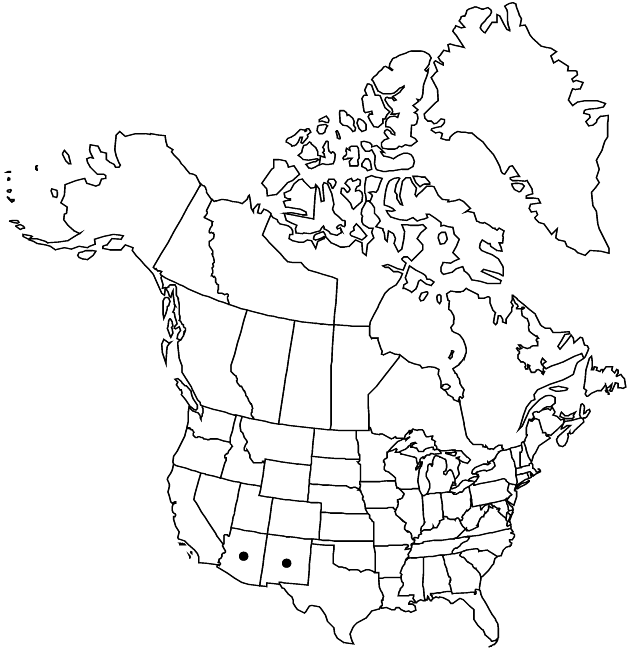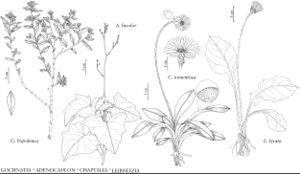Leibnitzia lyrata
Phytologia 78: 169. 1995.
Leaves: petioles 1/8–5/8 lengths of blades; blades 3–19 cm. Peduncles 8–64 cm in fruit, often dilated distally. Heads: vernal chasmogamous, autumnal cleistogamous. Cypselae tan to purplish, 6–10 mm. 2n = 46.
Phenology: Flowering (chasmogamous) Mar–early Jun, (cleistogamous) Aug–Nov.
Habitat: Grassy, partially open areas in pine, pine-oak, or oak woods, often in disturbed sites
Elevation: 2000–2500 m (to 3400 m in Mexico)
Distribution

Ariz., N.Mex., Mexico (Chihuahua), Mexico (Coahuila), Mexico (Durango), Mexico (Nuevo León), Mexico (San Luis Potosí), Mexico (Zacatecas), Mexico (and southward)
Discussion
Plants of Leibnitzia lyrata with cleistogamous heads are encountered and collected much more often than those with chasmogamous heads.
The combination Leibnitzia lyrata proposed by G. L. Nesom (1995) appeared to be based on Chaptalia lyrata D. Don (an illegitimate later homonym) but was actually based on Gerbera lyrata Schultz-Bipontinus, which was cited in synonymy by Nesom.
Selected References
None.
Lower Taxa
"broad" is not a number."/8lengthsofblades" is not declared as a valid unit of measurement for this property.
